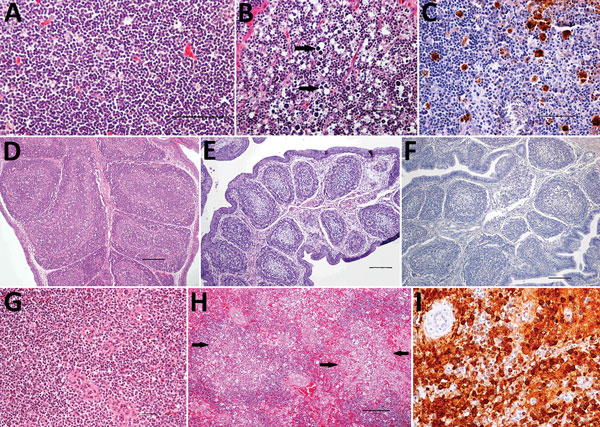Volume 23, Number 12—December 2017
Research
Experimental Infection of Common Eider Ducklings with Wellfleet Bay Virus, a Newly Characterized Orthomyxovirus
Figure 2

Figure 2. Histopathologic and immunohistochemical (IHC) findings in lymphoid organs of control and infected common eider (Somateria mollissima) ducklings experimentally infected with Wellfleet Bay virus (WFBV) (2 days postinoculation). A) Hematoxylin and eosin (H&E) stain of thymic cortex tissue from a control duckling. B) H&E stain of thymic cortex tissue from an infected duckling, showing marked multifocal acute apoptosis of lymphocytes (arrows). C) IHC stain of thymus tissue from an infected duckling, showing positive immunolabeling for WFBV in thymocytes. D) H&E stain of bursa of Fabricius tissue from a control duckling. E) H&E stain of bursa of Fabricius tissue from an infected duckling, showing marked diffuse lymphoid depletion. F) IHC stain of bursa of Fabricius tissue from an infected duckling showing negative immunolabeling for WFBV. G) H&E stain of spleen tissue from a control duckling. H) H&E stain of spleen tissue from an infected duckling, showing multifocal to coalescing acute necrosis (arrows). I) IHC stain of spleen tissue, showing positive immunolabeling for WFBV. I, original magnification ×200. Scale bars in panels A, B, and C indicate 50 µm and in panels D, E, F, G, and H indicate 100 µm.